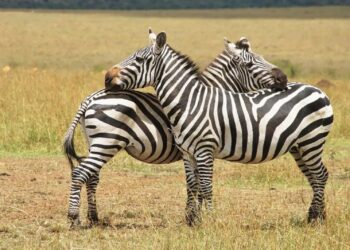In South American rainforests, giant anteaters dig into termite mounds with their long, sticky tongues. In Africa and Asia, pangolins and aardvarks use strong claws to break into ant nests. These animals aren’t closely related, but they’ve all evolved to hunt the same thing—ants and termites.
A sweeping new study published this month in the journal Evolution has revealed just how frequently—and oddly predictably—mammals have evolved to dine exclusively on social insects. According to the research, this specialized ant-and-termite diet, known as myrmecophagy, has independently evolved at least 12 times in mammals over the past 66 million years.
“Things keep evolving into anteaters, somehow,” Thomas Vida, the study’s lead author and a paleontologist formerly at the University of Bonn, told Science.

The Anteater Blueprint
To unravel why this evolutionary path is so common, Vida and his colleagues, Phillip Barden of the New Jersey Institute of Technology and Zachary Calamari of the City University of New York, combed through more than 600 scientific sources, compiling dietary data for 4,099 mammal species. They then mapped this information onto the mammalian family tree, tracing the evolutionary paths of species across millions of years.
The results were striking. From marsupials like the Australian numbat to egg-laying echidnas and placental mammals like the pangolin, ant-eating had evolved repeatedly—and independently.
“There are twice as many origins of ant- and termite-eating in mammals as there are origins of crab body plans,” Barden told ScienceAlert. “And that’s not even counting the over 10,000 species of arthropods that mimic ant and termite morphology, behavior, or chemical signaling to evade predation or get access to social insect resources.”
Long, narrow skulls, sticky, extendable tongues, powerful forelimbs with claws made for ripping into hardened mounds, little to no teeth, and even sluggish metabolisms. These mammals are obligate specialists, laser-focused on insect diets. Their entire anatomy is shaped by the demands of a single food source.
“There are a few obvious things: their skulls and tongues tend to elongate, their teeth often get reduced, and they usually have strong claws/forelimbs for tearing into insect nests,” Vida told ScienceAlert. “There are also some less obvious things, like their low body temperatures/slow metabolisms and their enzymatic adaptations towards digesting chitin.”
These traits appear across mammal species that otherwise have little in common. In other words, this is a prime example of convergent evolution, where unrelated species independently evolve similar traits to solve similar problems.

The Rise of the Planet of the Ants
What drove mammals to become anteaters, again and again?
The answer lies in the ants and termites themselves. Ants are ubiquitous today, with one study estimating there are 20 quadrillion of them on Earth, outweighing all wild birds and mammals combined. But they weren’t always this dominant. Just after the dinosaurs disappeared, ants made up less than 1% of the insect population.
But as flowering plants spread and ecosystems rebounded, ants and termites began to thrive. By the Miocene, around 23 million years ago, they had become ecosystem engineers, shaping everything from plant pollination to nutrient cycling. In tropical forests today, ants and termites outweigh all other insects and vertebrates combined.
“Social insects just have this way of causing co-evolution around them,” Vida said.

As these insect societies expanded into vast, protein-rich buffets, mammals evolved to exploit them. The study’s analysis of 158 social insect species confirmed that large colony sizes emerged mostly in the Cenozoic Era, creating stable, energy-dense food sources that made specialized foraging worthwhile.
It’s a high-risk, high-reward strategy. Ants and termites are rich in nutrients but low in calories. Only a narrow suite of adaptations makes the diet feasible. Yet once mammals adapt, they tend to stick with it. Across the 12 evolutionary branches leading to myrmecophagy, the researchers found only one example of reversal: the short-eared elephant shrew. This species transitioned back to a generalist diet roughly 13 million years ago.
“In some ways, specializing on ants and termites paints a species into a corner,” Barden told Nautilus. “But as long as social insects dominate the world’s biomass, these mammals may have an edge—especially as climate change seems to favor species with massive colonies, like fire ants and other invasive social insects.”

The Evolutionary Power of Ants
The findings deepen our understanding of how key species, like ants and termites, can ripple across the tree of life. The team’s database, one of the largest dietary datasets ever assembled for mammals, offers fertile ground for future studies. It could help scientists examine dietary specialization in other vertebrates—or even track how climate affects their feeding strategies.
“The history of life is full of crossovers,” Barden reflected. “Even very distantly related lineages—social insects and mammals last shared a common ancestor more than 500 million years ago—interact in ways that can kick off striking specializations over tens of millions of years.”
Laura Wilson, an evolutionary biologist at the Australian National University who was not involved in the study, told Science the findings are “bizarre and fascinating,” highlighting how little we still know about the evolutionary conditions that led mammals to become ant specialists.
Before mammals entered the picture, social insects were mainly targeted by other insects. The arrival of clawed, warm-blooded predators might have spurred them to evolve larger colonies or different defensive venoms—something future researchers may probe.
“It’s important to remember that the loss of any one species may have lots of unexpected consequences,” Barden said.






